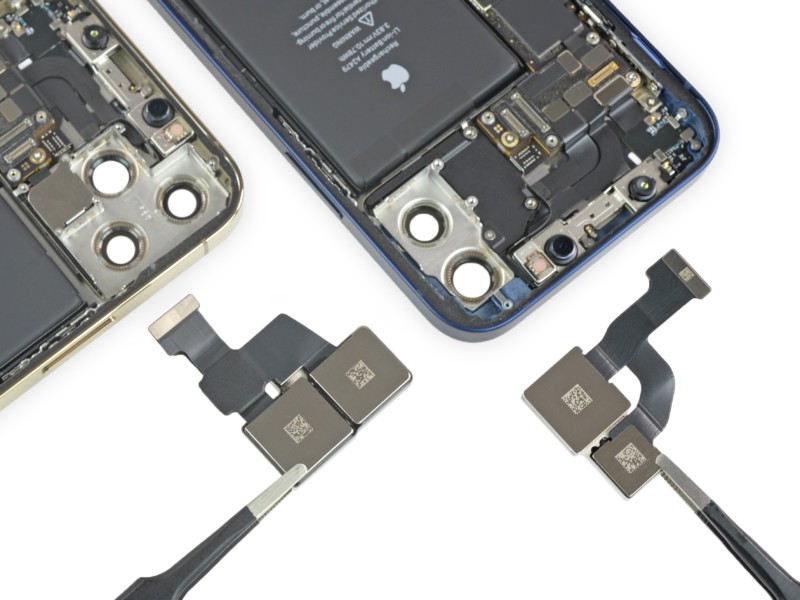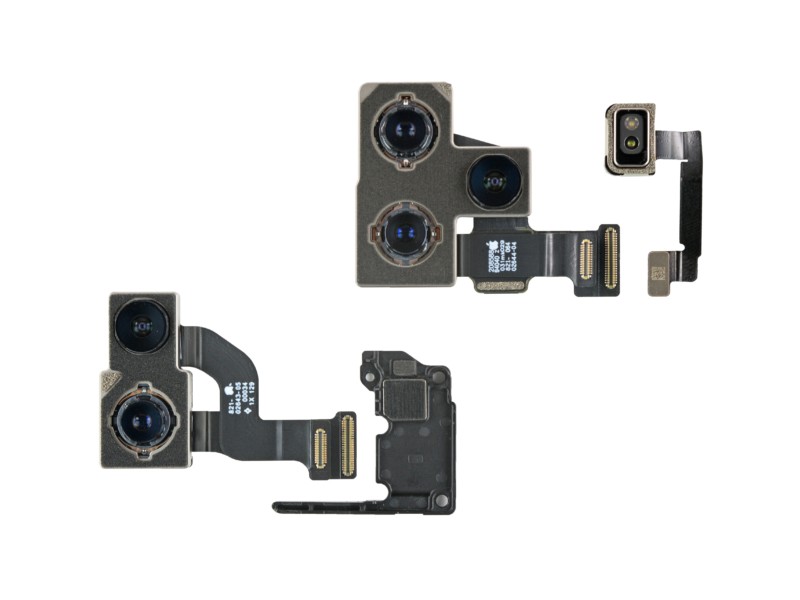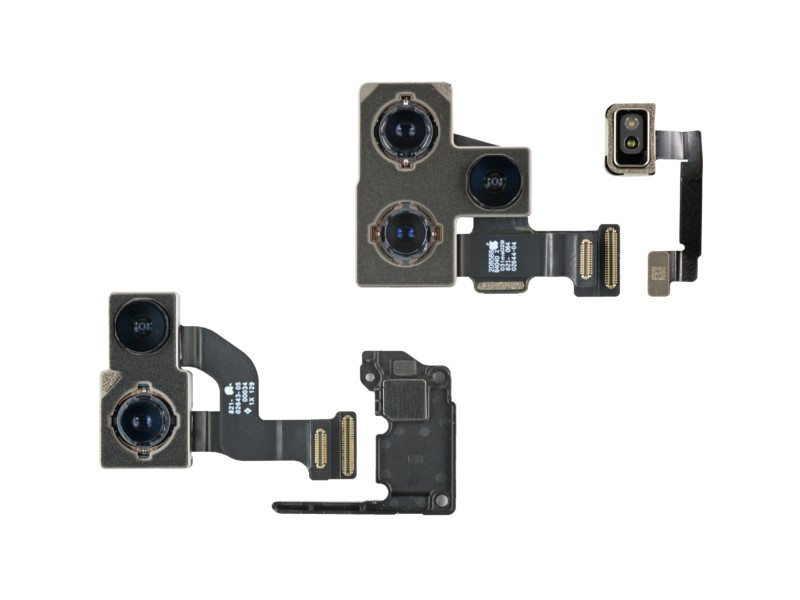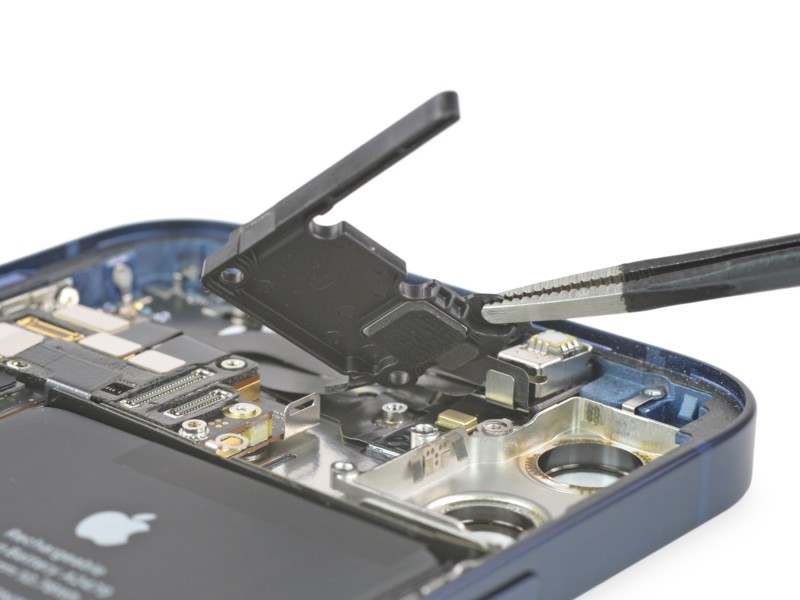Yesterday, iFixit finally tore into the brand new iPhone 12 and iPhone 12 Pro (the Pro Max isn’t available yet) during a 1 hour and 30 minute-long live stream. And about 44 minutes in, they got to the part we’re most interested in: the cameras.
If you followed the announcement coverage, you’ll know that the iPhone 12 and iPhone 12 Pro both feature a wide-angle and ultra-wide-angle cameras, with the Pro adding on a telephoto camera and a LiDAR sensor for depth scanning and low-light autofocus. The biggest photo-related upgrade—a much larger sensor for the wide-angle imager—is being reserved for the Pro Max.
Knowing all of this, it isn’t much of a surprise to find out that that iPhone 12 and iPhone 12 Pro are pretty much identical in terms of design. So identical, in fact, that they use the exact same camera connectors, even though the 12 Pro has an extra camera and a LiDAR sensor to deal with. As a result, the 12 includes a piece of plastic “spacer” to fill in the empty space where the other two modules would normally go.
You can see all of this in the iFixit images below:







“Turns out these phones are so similar, that where the Pro keeps its extra camera module + LiDAR sensor, the standard 12 has… a plastic spacer,” writes iFixit. “Surprisingly, both iPhones use the same camera connectors—even though the Pro has three cameras while the standard 12 has two. It’s a clever bit of socket sharing that allows Apple to use the same logic board design for both. We successfully installed the Pro’s triple camera module onto the dual-module 12 and got it to work! But only at 1x zoom.”
Check out the full teardown recording up top to see these things for yourself, and get an up-close look at the dual- and triple-camera modules inside these phones.
Of course, this feels kind of like a warm up… the opening act for the teardown we’re really excited about: the iPhone 12 Pro Max. Apple made much of the “47% larger” image sensor with IBIS that’s inside that phone—promising some major performance improvements along the way—and we’re very curious to see how it compares to the iPhone 12 Pro module above.
Image credits: Photos courtesy of iFixit, CC BY-NC-SA.